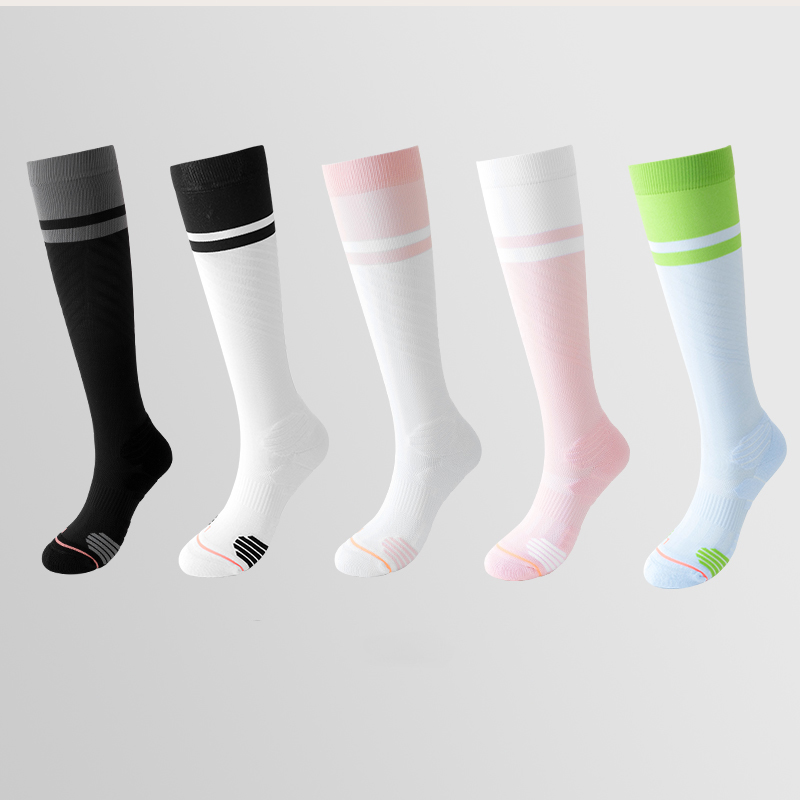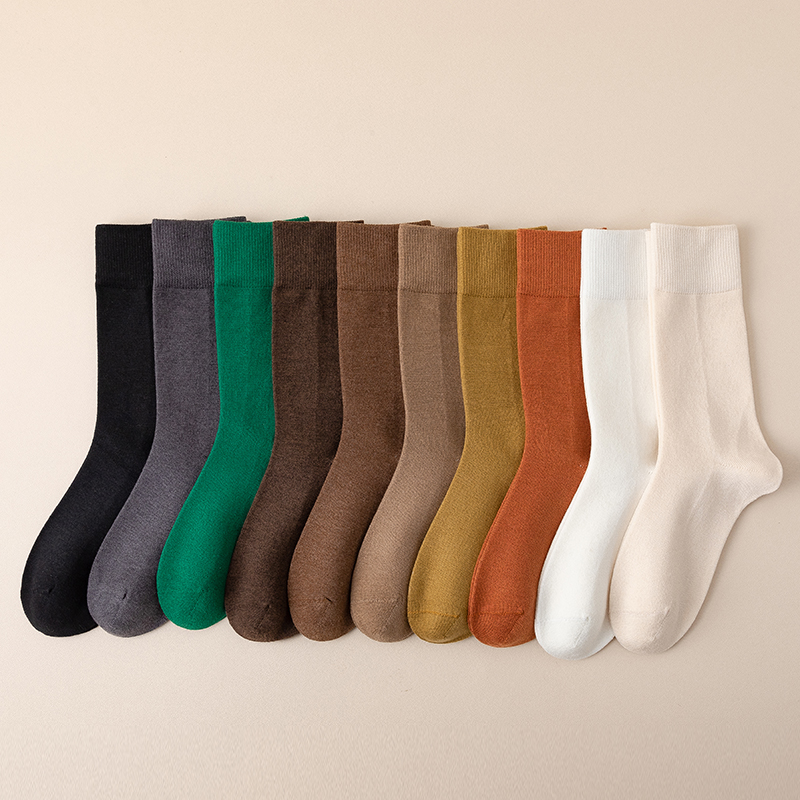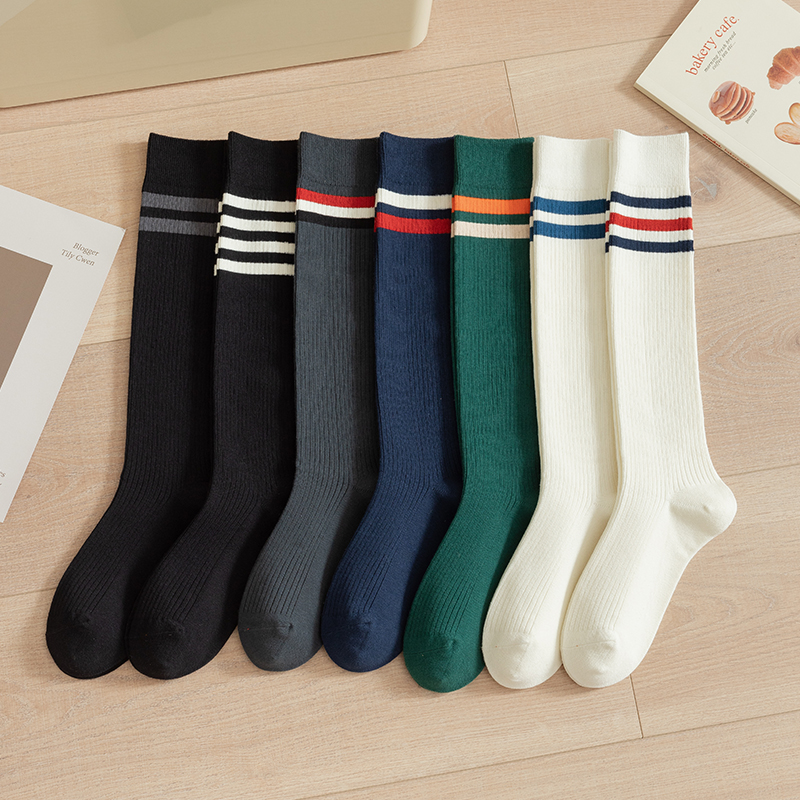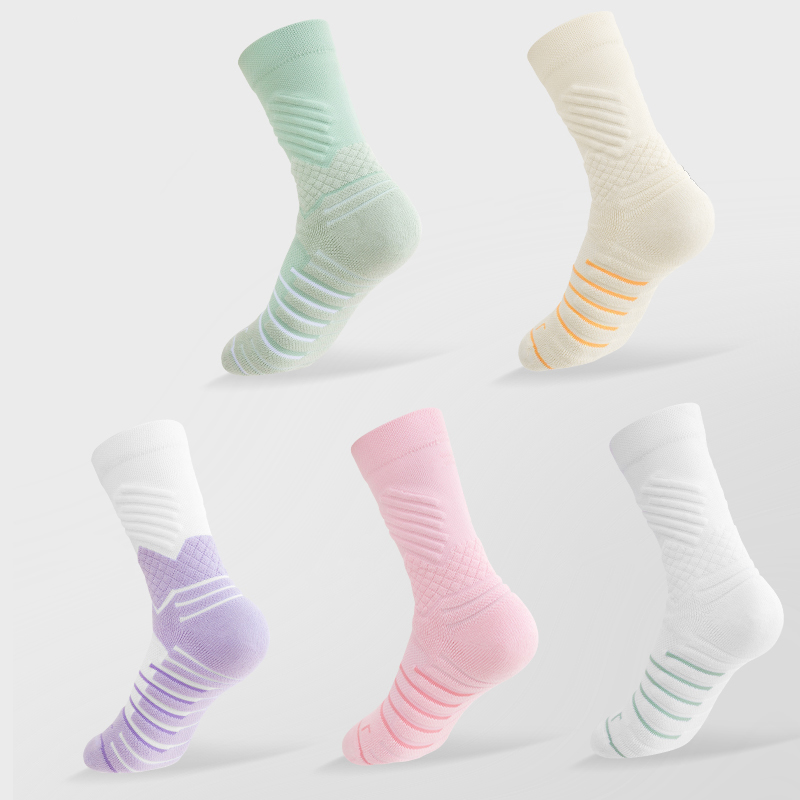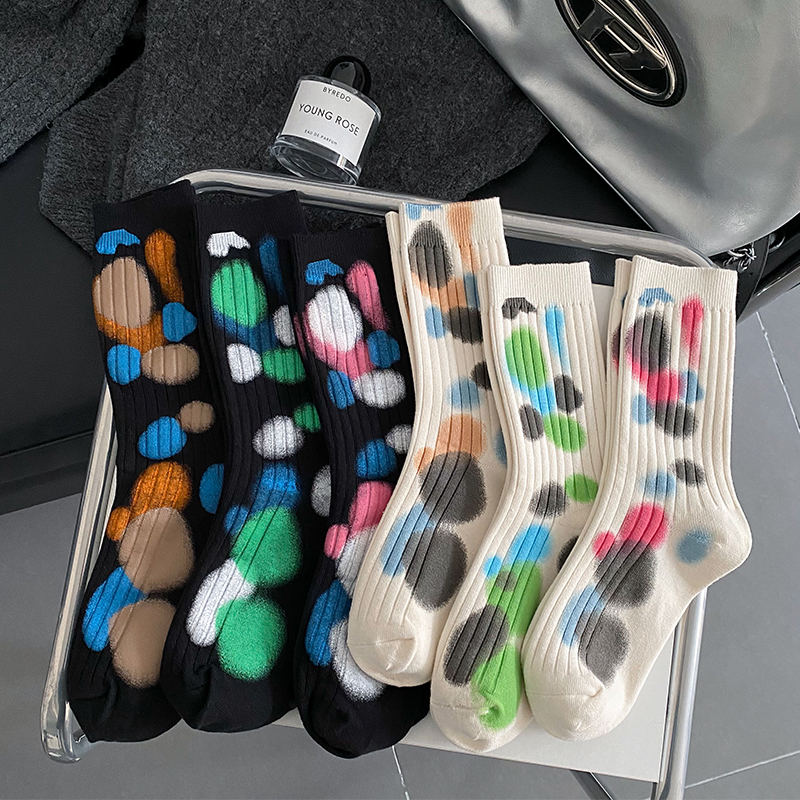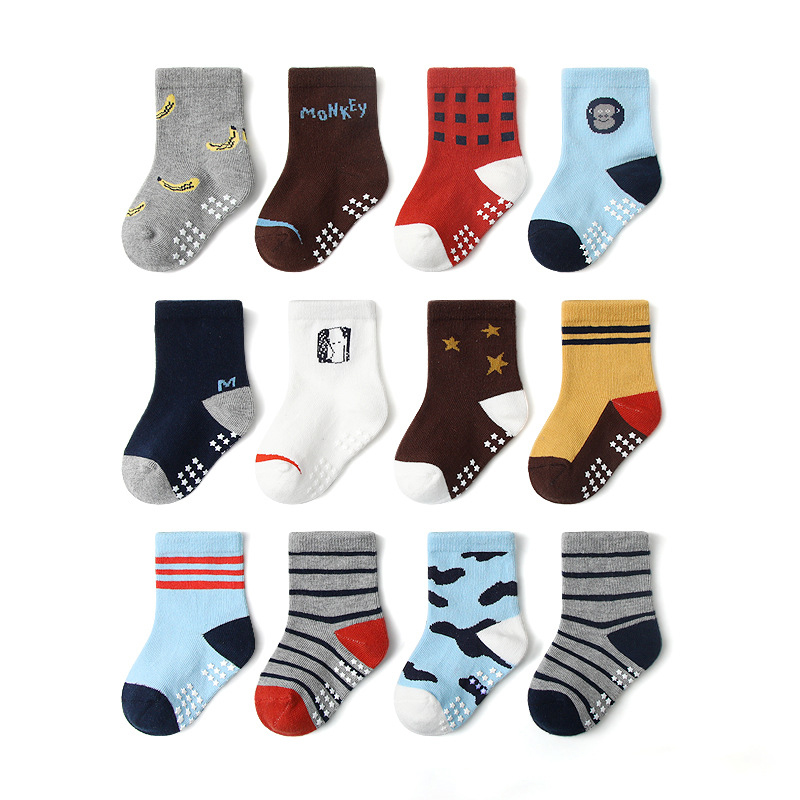Basketball is a high-intensity and strong confrontational competitive event. Athletes need to withstand frequent jumps, emergency stops, steering and landing impacts during competitions or training, so the buffering and protection of the feet are particularly critical. As an important part of the close-fitting foot in sports equipment, basketball socks directly affect the wearer's comfort, support and foot safety.
Thickness and shock absorption performance
The most common source of foot pressure in basketball is the impact force generated when landing. Thick basketball socks usually use multi-layer braiding or partially filled design, especially strengthened and thickened on the soles, heels and toes, playing the role of a "second layer of insole". This increase in thickness can effectively disperse the impact force on the ground, reduce the direct friction between bones and soft tissue, and thus improve buffering performance.
The thick cotton layer on the soles of the feet can absorb part of the reaction force from the ground, forming a double shock absorbing barrier with the midsole cushioning system of the basketball shoes. Compared with thin basketball socks, thick models can provide better foot stability during continuous jumping and landing movements, delaying the time of foot fatigue.
Locally thickened design protects key areas of the foot
High-quality basketball socks usually do not thicken the whole socks evenly, but are differentiated thickening treatments at specific stress-bearing areas. For example, the heel and forefoot area carry the most direct impact. These parts often use wraparound terry thickening structure or high-density braiding technology to increase the thickness of the buffer layer, improve the protection ability of the bone protrusions, and reduce the risk of redness or blistering caused by hard friction.
In addition, if the arch area is matched with the elastic support belt and light thickness increase, it can also stabilize the arch and prevent internal and external valgus, and is especially suitable for preventing fatigue damage during long-term high-intensity confrontation.
The influence of thickness on the space inside the shoe and its adaptability
Although the increase in the thickness of basketball socks is conducive to cushioning, it also puts higher requirements on the internal space of basketball shoes. If the socks are too thick, it may cause the foot space to be compressed, which will affect blood circulation and flexibility. Therefore, while increasing the thickness of high-end basketball socks, they usually use materials with strong compressibility and good rebound, such as Spandex (Spandex) blended with polyester, to achieve protection and fit compatibility through a thick but not bloated structure.
Thick socks with reasonable design should provide additional filling and support without affecting the size adaptation. This is especially important for players with loose shoe sizes and thin feet. It can avoid slippage and instability and enhance gait control.
Matching with different basketball shoes cushioning systems
The cushioned midsole designs of different basketball shoes vary. For example, some shoes use Zoom Air or Boost foam structure to provide high elastic feedback, while some shoes have thinner or hard midsoles. For the latter, thick-soled basketball socks can effectively supplement the defects of insufficient cushioning of the sole and improve overall foot comfort.
When the basketball shoes chosen by the player have a strong midsole rebound function, the thick socks can further enhance the cushioning level between the feet and the ground. Especially for amateur players who fight in high-hard fields such as cement floors and laminate floors, the protection significance of thick basketball socks is more significant.
The practical significance of foot injury prevention
Thick-soled basketball socks have obvious advantages in reducing plantar stress and reducing friction, and are of practical value for preventing common sports injuries such as plantar fasciitis, Achilles tendon pain, intertotor blisters, etc. Especially in the case of long-term training, multiple consecutive games, or old foot injuries, appropriately increasing the thickness of the socks is an active protection method.
According to clinical experience in the field of sports rehabilitation, thick socks can be regarded as a "micro protective gear", which can not only prevent minor sprains to a certain extent, but also help the transition of exercise in the rehabilitation stage of old injuries.

 English
English
 Español
Español
